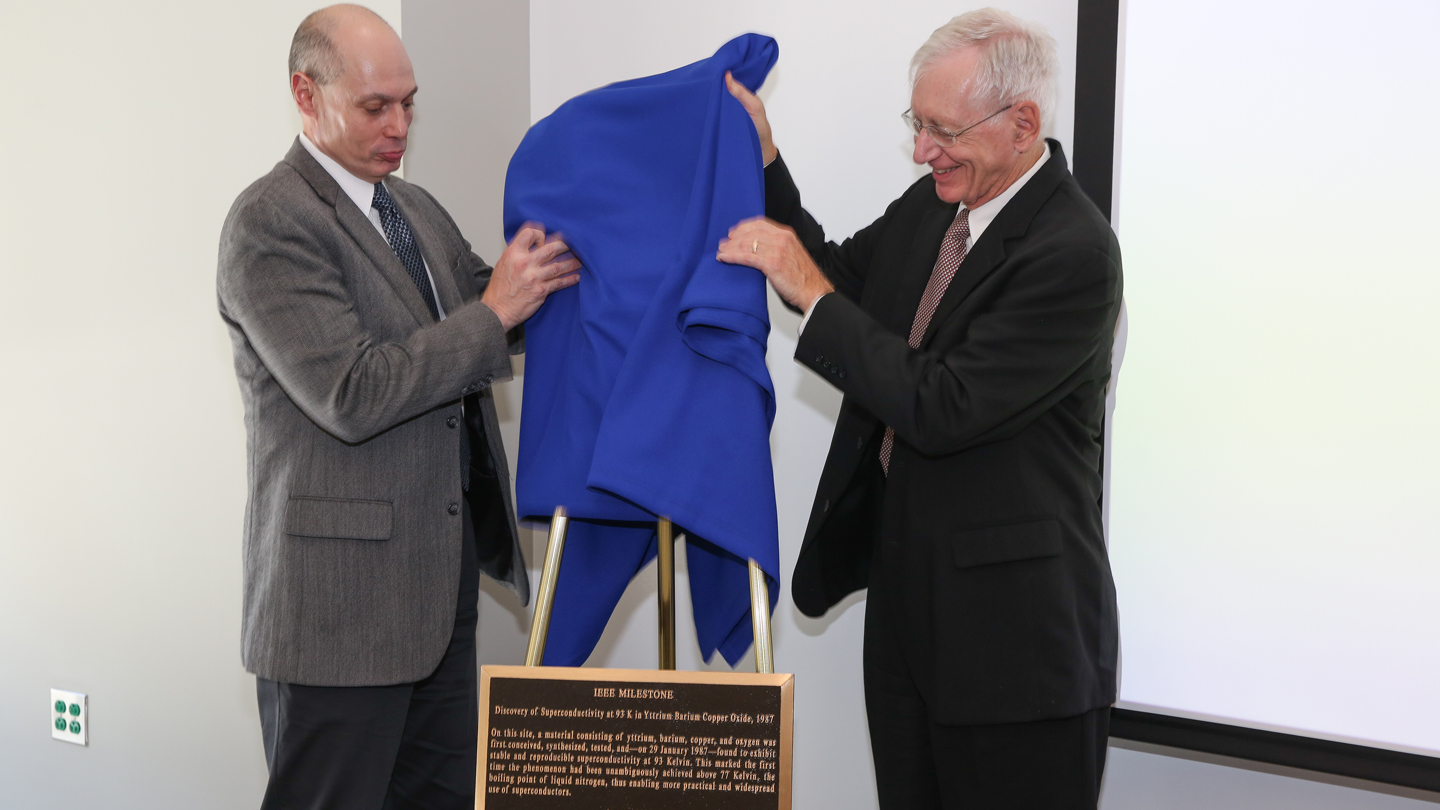
UAH President Darren Dawson and IEEE Region 3 Director Gregg Vaughn unveil the IEEE Milestone plaque on the UAH campus this week.
The University of Alabama in Huntsville has been honored by The Institute of Electrical and Electronics Engineers with a Milestone Plaque for the January 29, 1987 discovery of superconductivity at 93 Kelvin. The dedication will recognize the impact of the world’s first material to superconduct above the technologically significant temperature of liquid nitrogen.
The event will be held at the UAH Invention to Innovation Center (I2C) on Monday, August 19, 2019, beginning at 10 a.m. and concluding at 2 p.m. Community lectures will be presented from 10 a.m. to 11:30 a.m., followed by a lunch (registration required) from 11:45 a.m. to 1 p.m. and the unveiling ceremony from 1 p.m. (Full agenda included below).
The material that is the subject of the discovery was first conceived, synthesized, and tested in a UAH physics laboratory in Wilson Hall. It has been referred to by some science writers as one of physics’ “Holy Grails.” The discovery prompted an American Physical Society meeting in March of 1987 to become known as “The Woodstock of Physics.”
By crossing the 77 Kelvin barrier and making superconductivity possible at the temperature of the much more affordable and easily used coolant liquid nitrogen, the material discovered at UAH opened up a realm of more practical superconductivity applications.
Superconductors have found use in powerful electromagnets, such as those used in MRI and NMR machines, maglev trains, and fusion reactor research; low-loss electrical power cables; fast fault current limiters; fast digital circuits; sensitive detection and measurement of magnetism, subatomic particles, and light (even a single photon); and radio-frequency and microwave filters. The UAH material has been used in high field magnets (holding the current record of 45.5 Tesla), electric power cables, fault current limiters, and radio-frequency filters.
A bronze plaque will be unveiled and subsequently mounted outside the room that once served as the superconductivity laboratory. The citation reads, “On this site, a material consisting of yttrium, barium, copper, and oxygen was first conceived, synthesized, tested, and -- on 29 January 1987 -- found to exhibit stable and reproducible superconductivity at 93 Kelvin. This marked the first time the phenomenon had been unambiguously achieved above 77 Kelvin, the boiling point of liquid nitrogen, thus enabling more practical and widespread use of superconductors.”
The IEEE Milestone program, administered by the IEEE History Center, honors significant inventions, locations, and events related to electrical engineering and computing that have benefitted humanity.